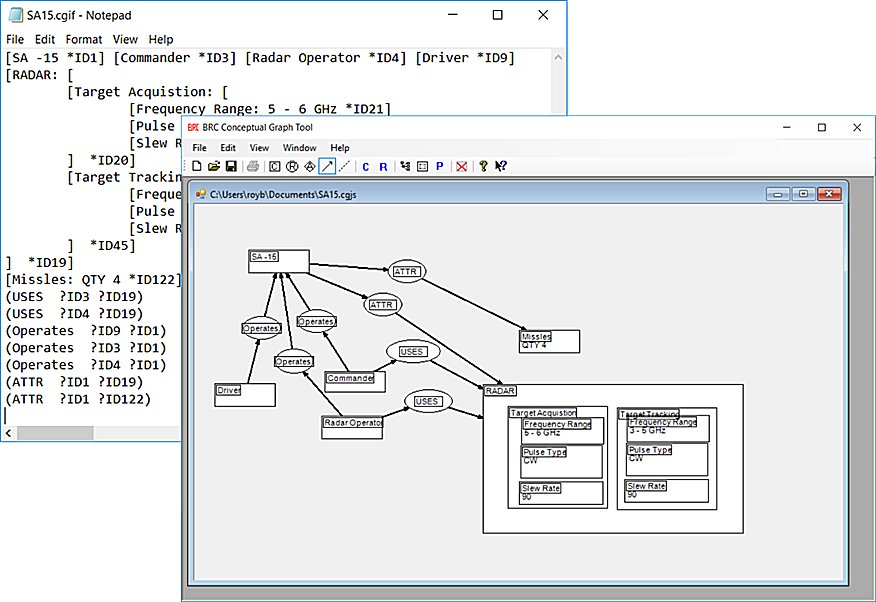Artificial Intelligence & Machine Learning
Since the founding of Bevilacqua Research Corporation 30 years ago, we have consistently applied machine intelligence and advanced algorithms to the solution of real-world problems. One of our first contracted efforts was the creation of the Battle Damage Assessment System (BDAS) for the Army Research Laboratory. BDAS integrated expert systems implemented as knowledge graphs, and multilevel neural networks to assess battle damage of tanks and to estimate an order of battle on an adversary’s tank column as a decision aid to a battlefield commander. It was clear that the methods used to build BDAS could be generalized to a set of AI/ML tools applicable to a broad range of practical, mission-critical problems. These tools became the basis for the Cognitive Object Reasoning Engine (CORETM).

Figure 1 shows the problem-solving process based on CORETM and its library of associated models, analytics, and application programs. Briefly, a problem description with available raw data are reviewed by the development team. Any necessary data normalization and data analysis are performed. Candidate solutions are postulated and tested with most successful approaches implemented using the CORETM Tools, and existing templates (if available) from the associated CORETM Library and any other applications deemed appropriate. The resulting delivery software embodies application-specific modules, algorithms and templates that can be installed on the customer’s computer or can be ported to edge-technology platforms as a stand-alone hardware solution.
Our approach to complex problems of this type was the development of a knowledge-handling software library of tools that create, edit and support a particular type of knowledge graphs known as conceptual graphs (CGs). Figure 2 shows an example development of a conceptual graph using the CORETM tools.

These CGs can be used to describe the characteristics of any domain of interest as well as all of the knowledge contained within that domain, resulting in a set of finite states where assessments can be made and justified through explanation patterns. There are several advantages to this approach over other knowledge processing methods to provide decision support as follows:
- The graph structure is non-brittle allowing new sensors and network knowledge to be added or taken away without the need to recreate or retrain the entire network. This saves time and trouble on long-term maintenance of the system and permits agile, real-time knowledge acquisition in the field.
- The structure, which is graphical, allows UML-like tools, such as CORETM, that already exist, to be used to manipulate the knowledge elements. This significantly reduces the need for complex training to utilize the algorithm.
- Conceptual graphs can take advantage of inferential knowledge and probabilistic ideas that are not certain or complete. For example, inferences can still be drawn (i.e. best guesses) even with partial or incomplete data.
- Unlike standard AI software tools, conceptual graphs allow the use of non-procedural code. This enables the software to adapt or learn in an unsupervised mode. Recent examples include the addition of unsupervised learning tools to the CORETM toolset that use Adaptive Resonance Theory (ART) machine learning, and Adaptive Assignment Algorithms to achieve real-time learning.
Finally, one of the most important characteristics of this approach is that through the use of finite states, a method of providing the validity of the assessments can be generated. This method uses subject matter experts to provide an initial assessment solution for each finite state. These assessments can be updated easily as new information is gained through the long-term use of the system, producing an AI system that has the capability to “explain” or provide a human-interpretable rationale for its decisions and recommendations.
